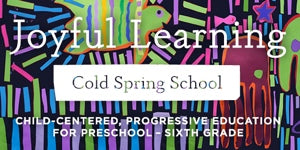“‘Tinaliah’ means ‘persevere,’” Catherine Cazes-Wiley says. “In many ways, it’s my story—how to survive as an artist… and not lose your identity. It’s been a real story, a real struggle.”
Cazes-Wiley’s art is design, particularly millinery, and she’s the director of Tinaliah Co-op, an organization that helps struggling refugees, as well as people experiencing poverty or homelessness, reconnect with any manual skills and artistic instincts they may have. The hope is that, eventually, they’ll be able to sell their wares and make a living from their art.
Cazes-Wiley was born in Montauban, France, just a few miles from communities that support old-school artisans—milliners, leatherworkers and even the odd illuminator. She grew up in Cameroon and Polynesia, where she remembers watching women weave baskets from coconut palms.
sponsored by
Manual skills have been a lifelong obsession for her, and she dreamed of leatherworking even after her father sent her to the States and enrolled her in something as exciting as aviation school. It turned out a life in the clouds wasn’t for Cazes-Wiley, and, after a career including work as an aircraft mechanic, she suffered “a collapse, a breakdown” and knew she had to return to her first love.
But living for your art can be difficult, as Cazes-Wiley and the members of the Tinaliah Co-op know all too well. Cazes-Wiley—then a single mother—was homeless for a period of five years before she arrived in New Haven. It was during this time that she began to think about the structural causes of homelessness, income inequality and disdain for manual skills in a way that would eventually catalyze the formation of Tinaliah.
“When I was homeless, I traveled a lot. And I saw a lot of people, immigrants, who were moving also,” she says. Cazes-Wiley witnessed people being forced from their homes because they could no longer afford to live in them. “It was like the Gold Rush again… It happens constantly, everywhere you are in the world. It’s the same story. As soon as an industry does well, people move where the gold is. And the poor people, they get dislodged.”
Cazes-Wiley lived in homeless shelters throughout the country, and she often helped women in the shelters write resumes. She noticed that many of these women had advanced manual skills, but they couldn’t find work to make use of them. Instead, they “made jewelry or did macramé for healing. Which is good, of course. But I knew it could be more,” she says, meaning she knew their art could become a source of income.
Bringing it with her wherever she goes, Tinaliah Co-op’s time in New Haven began in 2008. Members take English as a Second Language and business classes while Cazes-Wiley helps them make a living with their crafts. Some of them sell their wares at Sew Crafty, and the co-op has an Etsy shop as well.
She shares a recent success story: Bushra Madhi, a refugee from Baghdad, came to New Haven along with her four children. Although she was an advanced dressmaker, she had trouble finding work. Joining the Co-op led to her discovery by local designers, leading to several contracts and a teaching gig as well, according to Cazes-Wiley. She’s also started her own business with the help of the Co-op: Bushra Fashion.
“People in this country with manual skills fall off the grid, because there is no attention paid to it. Our culture values only intellectual skill,” she says. “And that’s not right… Some of us have a great mind and some of us have great hands.”
The concept of “great hands” is close to Cazes-Wiley’s heart. Her own work as a milliner is inspired by the petite mains—“little hands”—of French fashion houses like Chanel. The phrase refers to the people who painstakingly handcraft the sumptuous, intricate details of haute couture. Now, she says, there is less of a need for petite mains, but “there are still a lot of little hands that love to be little hands. It’s a joy to create.”
Cazes-Wiley’s hats might be best seen as static representations of that joy. Feathers, mesh, fake fur and recycled mink, antique lace, pompoms and ribbons adorn her creations. There are bright colors and avant-garde shapes. Cazes-Wiley’s bombastic work is inspired by her general outlook as well as her faith. “Life is hard. You have to have a little fun,” she says, adding, “I’m a strong believer. When I see God create the giraffe, and the ladybug—it’s so extravagant, it’s so far out. What are we doing being so limited?”
She also tries to recycle products—the more unusual the better—when she can, in classes she teaches at both MakeHaven and the Co-op (located on Eastern Street), as well as in her designs. She points out an elegant bridal fascinator, with a large display of pearly white mesh and feathers. “These are garlic bags,” she says of some of the mesh. And then, laughing, “This bride has swan feathers and garlic bags. It’s democracy, right?”
During my visit, Cazes-Wiley and her friend and fellow co-op member Sharon “Shay” Jones take a break from their work to model their most recent creations. As they pose for photos, Cazes-Wiley says, “It’s a matter of not being limited. I have disabilities. I was homeless. I was an immigrant. I was a single mother. So what? I’m just like anybody else. Every woman and every man has a dream, and if you don’t continue to believe and pursue that, you’re nobody. You won’t have a character or a personality. [Your dream] is just who you are.”
Tinaliah Designs & Co-op
Etsy (Designs) | Etsy (Co-Op) | Facebook
Written by Sorrel Westbrook.









